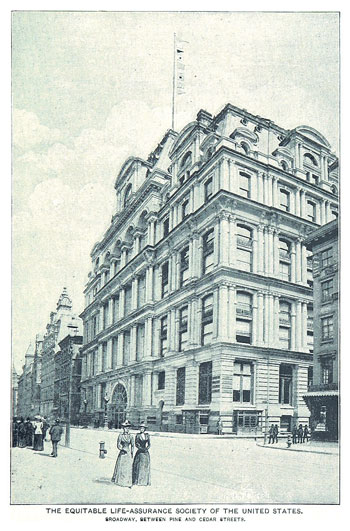Trending
This month in real estate history
Fire destroys original Equitable Life building, HPD scandal unveiled, and more…

1912: Fire destroys original Equitable Life building
The old Equitable Life Assurance Society Building burned in a massive blaze 106 years ago this month, according to the New York Times. The fire left six dead and completely destroyed what was considered the world’s first skyscraper. The scene was gruesome, as the water used by firefighters to extinguish the fire froze over its ruin, entombing the dead under 15 feet of ice and complicating the cleanup. Luckily for clients of the insurance company, almost all of the estimated $1 billion in cash, securities and much of the financial documents held at the building were kept in safes and survived the fire. The company decided to rebuild on the same plot, on Broadway between Pine and Cedar streets, erecting the now-landmarked 40-story Equitable Building. The 1915 tower had no setbacks and occupied the entire block, casting a massive shadow on the surrounding area. It was a “direct catalyst” for the 1916 Zoning Resolution, according to the Department of City Planning, which coincidentally moved its main offices there in 2015.
1951: New buyers plan to tear down the Sun Building
Investors purchased the then-100-year-old Sun Building at 280 Broadway with plans to demolish it 67 years ago this month, according to the New York Times. The new owners wanted to erect a $40 million skyscraper in its place, but the price of steel shot up during the Korean War and the project became unfeasible, according to Untapped Cities. They sold it the following year. The city bought the property 14 years later with plans to level the building and make way for the Civic Center project, but that plan also fell through. Alexander Turney Stewart constructed the seven-story building in 1846 to house his department store, the first in the city. The building later got its name when the New York Sun newspaper moved in during World War I. The building still stands today and serves as the headquarters of the Department of Buildings.

Robert Morgenthau
1980: HPD crackdown kicks off
A wide-reaching, decade-long bribery scheme run by city housing inspectors was exposed 38 years ago this month, according to a New York Times report. The city suspended four inspectors for demanding bribes from contractors for work with the city. The crackdown resulted in the conviction of a dozen city employees and four contractors for taking “hundreds of thousands of dollars” in dirty money for contracts, according a 1991 report by the Attorney General’s Statewide Organized Crime Task Force. Longtime Manhattan District Attorney Robert Morgenthau oversaw the nine-month investigation, which revealed that the inspectors, many of whom floated around to various city agencies over their careers, would demand money in exchange for contracts, inspections and payment for work done on properties the city seized for unpaid taxes. City officials also found that the inspectors approved payments to contractors for work that “often had not been done at all,” according to George C. Dole, the inspector general for the Department of Housing Preservation and Development, the agency that managed the properties. City officials were first tipped off to the scheme after finding bookkeeping irregularities.




